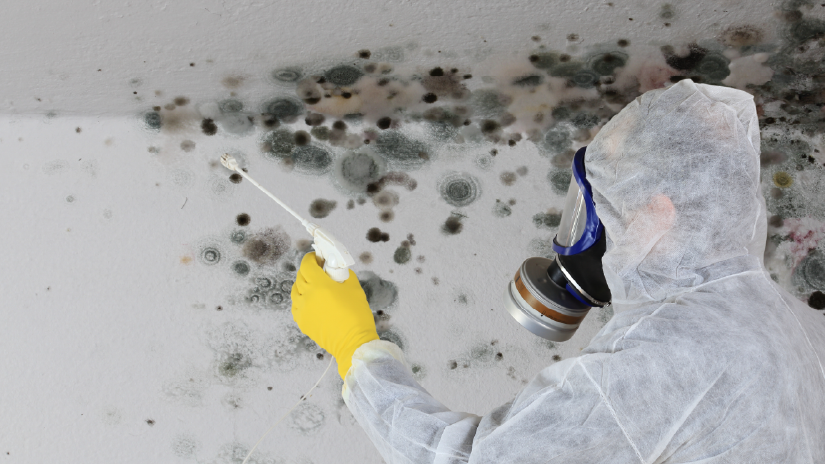If your home or business has unusual marks on the wall or a suspicious musty scent, it could be a sign that a mold problem exists. In such cases, proper mold identification is imperative for protecting your property and the health of its inhabitants.
Many factors contribute to mold growth, from a simple water leak to poor ventilation, and different mold types may require unique treatment and remediation.
This guide covers several common types of mold, what they look like, and the potential health concerns they present. Although the guide provides a general overview of potential mold issues, definitive identification and the safe eradication of mold can only be guaranteed through the services of professional mold inspection and
Types of Mold
lthough black mold often steals the spotlight due to its prevalence and potential toxicity, it’s just the tip of the iceberg. There are a range of other molds that carry their own risks.
According to the Centers for Disease Control and Prevention, the most common indoor molds are:
- Stachybotrys chartarum (black mold)
- Alternaria
- Cladosporium (black-colored mold)
- Penicillium
1. Stachybotrys Chartarum (Black Toxic Mold)
Stachybotrys chartarum, commonly referred to as black mold, is the most toxic mold type. It usually emits a musty odor and grows in damp areas of a home or business.
What to know about Stachybotrys chartarum:
- What does it look like? Stachybotrys chartarum is black in color and has a slimy texture. It also produces a noticeably musty odor, which is a warning sign that it’s growing nearby.
- Where does it grow? Stachybotrys chartarum typically grows in places that are constantly moist, such as shower tiles, around leaky pipes, or in areas that produce frequent condensation.
- How does it spread? Mold releases spores into the air, which can then be absorbed through the skin or by inhalation.
- What health problems are linked to black mold? Of all common molds, black mold is linked to the most health problems. Exposure can cause hay fever-like symptoms (including runny nose, nasal congestion, watery eyes, sneezing, coughing, itchy throat, and sinus pressure), asthma attacks, sinus infections, and even fatigue and depression. Young children, the elderly, and those with respiratory problems or immune system disorders are particularly susceptible to health problems caused by exposure to black mold; however, most people will experience a reaction of some sort if exposed to mold.
evalent in warm, dry climates and can potentially cause serious respiratory problems such as asthma.
What to know about Alternaria:
- What does it look like? This type of mold is dark in color and has a downy or wool-like texture.
- Where does it grow? While it’s considered one of the most common outdoor molds, Alternaria also grows indoors. It likes damp spots (e.g., showers and under leaky pipes) but also thrives in areas with minimal moisture, such as in ductwork or upholstery.
- How does it spread? Alternaria spreads primarily through the release of airborne spores. These spores can be carried by the wind or through air currents indoors, particularly when the mold or its food source is disturbed. When the spores find a suitable damp environment, they can germinate and start a new mold colony.
- What health problems are linked to Alternaria? This mold is one of the most likely to cause allergic reactions. Hay fever-like symptoms typically follow exposure to Alternaria — and it may cause individuals to develop asthma over time.

